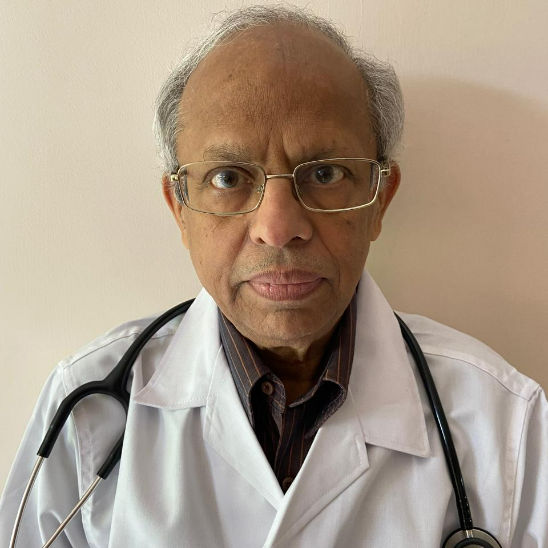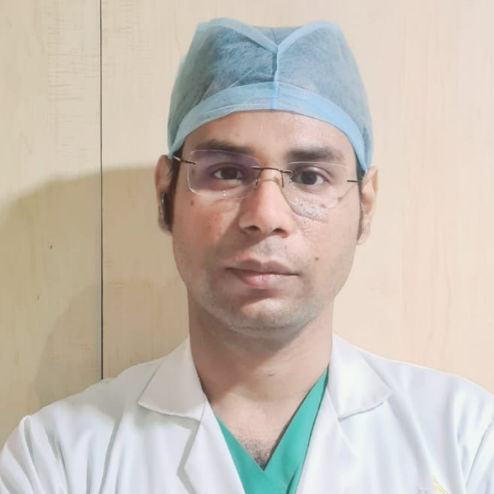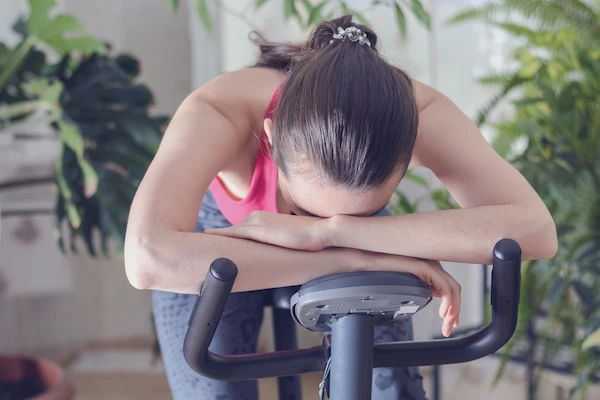Headaches in Children: A Pediatric Neurologist's Guide to Lifestyle Solutions
Know about the headaches in children, types of headache, building a plan for headache rescue and a neurologist's view on headaches and more.

Written by Dr. Shaik Abdul Kalam
Reviewed by Dr. D Bhanu Prakash MBBS, AFIH, Advanced certificate in critical care medicine, Fellowship in critical care medicine
Last updated on 6th Oct, 2025

Introduction
Watching your child suffer from a headache is a heart-wrenching experience. As a parent, you feel helpless, wondering if it's just a passing phase or a sign of something more serious. You're not alone. Recurrent headaches are one of the most common complaints in pediatric clinics, affecting up to 75% of children by their teenage years. This article will demystify the different types of childhood headaches, explore the profound connection between daily habits and head pain, and provide a practical, step-by-step plan you can implement at home to build your child's resilience and reduce the frequency and intensity of their headaches.
More Than Just a "Headache": Understanding the Types
Not all headaches are created equal. Understanding the specific type your child experiences is the first step toward effective management. The two most common primary headache disorders in children are migraines and tension-type headaches.
Consult a Neurologist for Personalised Advice
Migraines in the Young: It's Not Just an Adult Problem
Childhood migraines can look different from adult migraines. While adults often experience a throbbing pain on one side of the head, children may have pain on both sides. The attacks might be shorter, sometimes lasting as little as an hour. Key features include:
1. Pain Quality: Often described as throbbing or pulsating.
2. Associated Symptoms: Nausea, vomiting, abdominal pain (known as abdominal migraine), sensitivity to light (photophobia) and sound (phonophobia). A child may simply want to lie down in a dark, quiet room.
3. Auras: Some children experience an "aura" before the headache, such as seeing flashing lights, zigzag lines, or temporary vision loss.
Tension-Type Headaches: The Pressure Cooker Effect
These are often described as a constant, dull, aching sensation all over the head, like a tight band around the forehead. They are typically not severe enough to prevent daily activities but can be persistent and frustrating. The primary trigger is often muscle tension in the neck and scalp, frequently linked to stress, poor posture, or lack of sleep.
The Rare but Important: Secondary Headaches and Red Flags
While most childhood headaches are primary (meaning the headache is the main problem), it's crucial to rule out secondary headaches caused by an underlying condition. If your child's headache is accompanied by any of the following, seek immediate medical attention:
1. A sudden, severe "thunderclap" headache.
2. Headache following a significant head injury.
3. Headache with a high fever, stiff neck, or confusion.
4. A headache that wakes the child from sleep or is worse in the morning.
5. New neurological symptoms like blurred vision, weakness, or seizures.
The Lifestyle-Headache Connection: A Neurologist's View
The brain is a highly sensitive organ, and in children, it's still developing. Its stability is easily disrupted by imbalances in basic physiological needs. Think of lifestyle factors as the foundation upon which a stable, headache-resistant brain is built.
The Brain's Fuel Gauge: Hydration and Regular Meals
The brain is approximately 75% water. Even mild dehydration can cause it to temporarily shrink, pulling away from the skull and triggering pain receptors. Similarly, the brain runs on glucose from food. Skipping meals, especially breakfast, causes a drop in blood sugar, which can be a potent headache trigger for kids. A study published in Neurology found that consistent meal patterns were as important as the food itself in preventing migraines.
The Sleep-Headache Cycle: Why Bedtime is a Treatment
Sleep is when the brain repairs itself. Both insufficient sleep and oversleeping can trigger headaches. Irregular sleep patterns on weekends can be particularly problematic, essentially giving the brain "jet lag." Aim for a consistent sleep schedule, even on Saturdays and Sundays, to regulate the body's internal clock.
The Digital Dilemma: Screen Time and Eye Strain
Excessive screen time is a modern-day headache trigger for kids. It contributes through multiple mechanisms:
1. Eye Strain: Focusing on a pixelated screen for prolonged periods tires the eye muscles.
2. Poor Posture: Slouching over a phone or tablet strains neck and shoulder muscles.
3. Blue Light: Exposure can disrupt melatonin production, interfering with sleep quality.
Encourage the 20-20-20 rule: every 20 minutes, look at something 20 feet away for 20 seconds.
The Stress and Anxiety Link: School, Social, and Family Pressures
Children today face immense pressure. Stress causes the release of hormones like cortisol and adrenaline, leading to muscle tension and changes in blood vessel diameter—both direct pathways to headaches, particularly tension-type headaches. Open communication and teaching simple coping mechanisms like deep breathing can be powerful tools. If your child's headaches seem linked to school stress, it's important to address the root cause.
Building Your Child's Headache Defense Plan: A Step-by-Step Guide
Empowerment is key. Instead of feeling victimised by headaches, you and your child can work together to build a defense system.
The Headache Diary: Your Most Powerful Diagnostic Tool
Before your first doctor's appointment, start a diary. This provides objective data that is invaluable. Note down:
1. Date and time of headache.
2. Severity (on a scale of 1-10).
3. Location of pain.
4. What your child ate/drank that day.
5. Hours of sleep the previous night.
6. Any potential stressors (e.g., a test at school).
7. Medication taken and its effect.
8. This diary can reveal invisible patterns otherwise, making it easier to identify and avoid triggers.
Creating a Headache-Healthy Daily Routine
Consistency is the antidote to triggers. Build a predictable daily schedule that includes:
Set meal times: Prevent blood sugar dips.
1. Consistent sleep/wake times: Even on weekends (within an hour).
2. Scheduled downtime: Unstructured play and relaxation are crucial.
3. Regular physical activity: Exercise is a natural stress reliever and promotes healthy blood flow.
Simple, Non-Medication Pain Relief Techniques
When a headache strikes, try these before reaching for medication:
1. Rest in a Dark, Quiet Room: This is often all a child with a migraine needs.
2. Cool Compress: A cool, damp cloth on the forehead can soothe pain.
3. Hydration: Have them sip a full glass of water.
4. Caffeine Caution: A tiny amount of caffeine (e.g., in some sodas) can help in the short term by constricting blood vessels, but reliance can lead to rebound headaches.
When to Seek Professional Help: Consulting a Pediatric Neurologist
While lifestyle changes are powerful, they are not a substitute for medical advice. You should consult a paediatrician or a pediatric neurologist if:
1. Headaches are becoming more frequent or severe.
2. They interfere with school, sports, or social life.
3. Your child is using over-the-counter pain medication more than twice a week.
4. You have implemented lifestyle changes for 4-6 weeks with no improvement.
5. You are simply worried.
A specialist can provide a formal diagnosis, rule out underlying causes, and discuss preventive medications if necessary. If symptoms persist beyond two weeks despite your efforts, consult a doctor online with Apollo24|7 for a preliminary evaluation and to determine the best next steps.
Conclusion
Navigating your child's headaches can feel overwhelming, but it's important to remember that you have more control than you might think. By understanding the types of headaches and recognising the powerful role of daily habits, you can shift from a reactive to a proactive approach. These steps create a foundation of health that benefits not just the headache but your child's overall well-being. If you've tried these methods and the headaches continue to impact your child's quality of life, don't hesitate to seek professional guidance to create a personalised management plan.
Consult a Neurologist for Personalised Advice
Consult a Neurologist for Personalised Advice

Dr. Aditendraditya Singh Bhati
Neurosurgeon
18 Years • MBBS(2004), DNB Neurosurgery(2014); MNAMS; Fellow Neuroendoscopy
Delhi
Apollo Hospitals Indraprastha, Delhi
(100+ Patients)

Dr. Ganeshgouda Majigoudra
Neurologist
10 Years • MBBS, MD ( GENERAL MEDICINE) DM (NEUROLOGY)
Bengaluru
Apollo Clinic, JP nagar, Bengaluru

Dr Rajashekar Mummadi
Neurologist
3 Years • MBBS, DNB General Medicine, DRNB Neurology
Hyderabad
Dr Ram's Neuro Clinic, Hyderabad

Dr. E Prabhakar Sastry
General Physician/ Internal Medicine Specialist
40 Years • MD(Internal Medicine)
Manikonda Jagir
Apollo Clinic, Manikonda, Manikonda Jagir
(125+ Patients)

Dr Debnath Dwaipayan
Neurosurgeon
9 Years • MBBS, MS(Gen. Surgery), DrNB (Neurosurgery)
Delhi
Apollo Hospitals Indraprastha, Delhi
Consult a Neurologist for Personalised Advice

Dr. Aditendraditya Singh Bhati
Neurosurgeon
18 Years • MBBS(2004), DNB Neurosurgery(2014); MNAMS; Fellow Neuroendoscopy
Delhi
Apollo Hospitals Indraprastha, Delhi
(100+ Patients)

Dr. Ganeshgouda Majigoudra
Neurologist
10 Years • MBBS, MD ( GENERAL MEDICINE) DM (NEUROLOGY)
Bengaluru
Apollo Clinic, JP nagar, Bengaluru

Dr Rajashekar Mummadi
Neurologist
3 Years • MBBS, DNB General Medicine, DRNB Neurology
Hyderabad
Dr Ram's Neuro Clinic, Hyderabad

Dr. E Prabhakar Sastry
General Physician/ Internal Medicine Specialist
40 Years • MD(Internal Medicine)
Manikonda Jagir
Apollo Clinic, Manikonda, Manikonda Jagir
(125+ Patients)

Dr Debnath Dwaipayan
Neurosurgeon
9 Years • MBBS, MS(Gen. Surgery), DrNB (Neurosurgery)
Delhi
Apollo Hospitals Indraprastha, Delhi
More articles from Headache
Frequently Asked Questions
1. Can certain foods cause headaches in my child?
Yes, for some children, specific foods can be triggers. Common culprits include aged cheeses, processed meats (containing nitrates), chocolate, and foods with MSG. However, the most common dietary trigger is dehydration or skipping meals. Keeping a food diary alongside the headache diary is the best way to identify if a specific food is a problem for your child.
2. My child’s headaches always happen after school. Is this stress-related?
It's very likely. The combination of mental fatigue, eye strain from focusing all day, possible dehydration, and the buildup of academic or social stress can create a 'perfect storm' for a headache after school. Encouraging a relaxing routine after school, a healthy snack, and plenty of water can help mitigate this.
3. Is it safe to give my child over-the-counter painkillers for headaches?
While occasional use of ibuprofen or acetaminophen is generally safe under pediatric guidance, using them more than two days a week can lead to 'medication-overuse headaches' or rebound headaches. This creates a cycle where the medication itself triggers the next headache. Always follow dosage instructions based on your child's weight and try non-medication approaches first.
4. Could my child’s headaches be related to vision problems?
Absolutely. Uncorrected vision problems like nearsightedness or astigmatism cause significant eye strain, which can manifest as frontal headaches, especially after activities like reading or using screens. A comprehensive eye exam is a crucial step if your child complains of headaches.
5. At what age can children get migraines?
Migraines can start at any age, even in toddlers. In very young children, they may not present as a classic headache but as cyclical vomiting, abdominal pain (abdominal migraine), or episodes of severe dizziness. The diagnosis can be trickier at younger ages, so describing all symptoms to your doctor is vital.
.webp)


